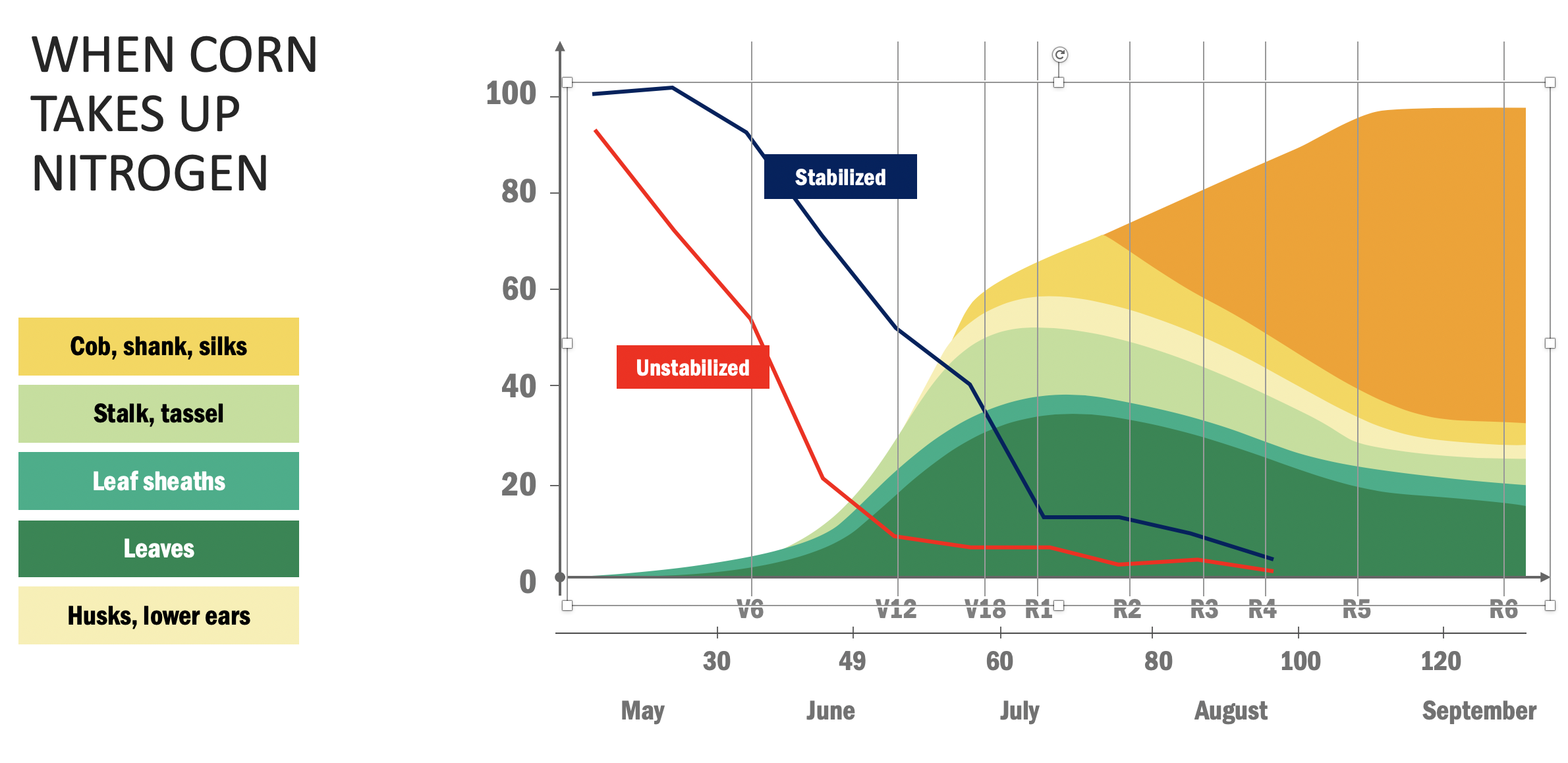As we look back at 2018, a year most of us in the farming industry would rather forget, we dealt with an over-abundance of precipitation. 40+ inches of rain, even over 50 inches in some areas, was common in our trade territory. All of this excess rain had a negative impact on corn yields in 2018. Some fields lost yield to flooding (more than once in some cases), while other fields lost some bushels due to ponding and poor drainage. All of this excess rainfall also had an impact on how much nitrogen was actually available for the crop in our well drained fields too. Some nitrogen was lost due to leaching from all of this abundant rainfall, while other nitrogen was also lost due to de-nitrification into the atmosphere.
Protect Your Investment
Looking ahead to 2019, what can we do to protect our nitrogen investment? We can’t predict what challenges we will face this coming growing season. Will we have excess rainfall again, or will it be more normal? One thing we do know is that we are starting the season with a full tank of soil moisture, so any rainfall in the early part of the growing season could pose a risk for nitrogen loss. We also know that your N investment is going to be higher in 2019 than it was last year. Therefore, protecting this investment with nitrapyrin, which is a nitrogen stabilizer, would be an economical thing to do.

Nitrapyrin
How does nitrapyrin work? Let’s first take a look at how the nitrogen cycle works. Whether you apply anhydrous ammonia (NH3), urea (46-0-0) or uan (32-0-0 or 28-0-0); all of these fertilizers are converted to the ammonium form when they react with soil moisture. Ammonium is then converted to nitrite in the soil by nitrosomonas bacteria, and then is further converted to nitrate in the soil by nitrobacter bacteria (see Figure 1). When N is in this nitrate form is when we are at the greatest risk for N loss. If we are in a situation with abundant precipitation, nitrate can leach out below the root zone and become unavailable to the growing corn crop. In poorly drained soils, nitrate has the potential to denitrify into the atmosphere as long as the soil stays saturated. Using a product containing nitrapyrin helps target the nitrosomonas bacteria from converting ammonium to nitrate by slowing them down and reducing their soil activity. This allows ammonium to bind to the soil, protecting it from leaching or de-nitrification. A corn plant will utilize ammonium more efficiently; it will also utilize nitrate, but nitrate needs to be converted back to the ammonium form in the plant. Since approximately 80% of the corn plants rootmass is in the top 24 inches of soil, keeping the N in this zone is critical. The corn hybrids of today will uptake the vast majority of their N from the V10 growth stage through the R4 maturity stage (see Figure 2).

This is why it’s important to stabilize your N so it’s still available to the corn plant when it needs most later in the growing season. The two nitrapyrin products we promote at FCS are N-Serve to be used with NH3, and Instinct to be used with urea or uan.
Ultimately, choosing to protect your N investment is your choice, but keep in mind it is also the responsibility of me as an agronomist and you as a grower to do our role in protecting our environment as well. Using a nitrapyrin product this spring will help keep your N in place and more accessible to the crop, reducing risks of N loss. This should help have a positive impact on the environment by reducing the amount of N that reaches our streams and rivers. Talk to your local FCS agronomist about coming up with a plan to protect your N investment in 2019.
Article By: Mark DeKam
CCA, Sioux Center Agronomist